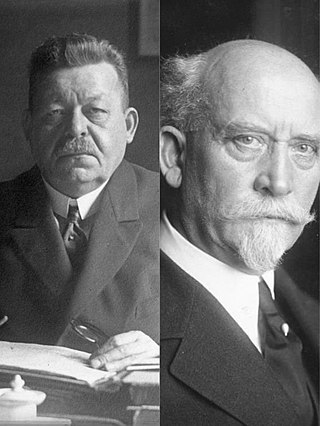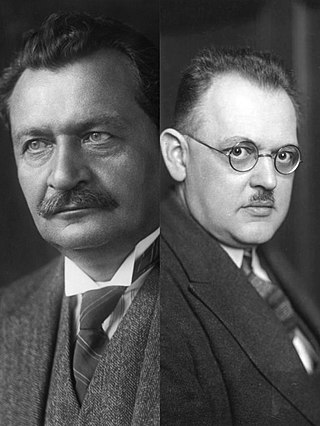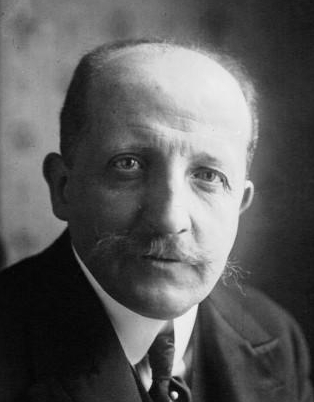
General elections were held in Fiji between 15 and 29 April 1972, the first since independence from the United Kingdom in 1970. They were characterised by the lack of rancour between racial groups, typical of the 1966 general election and the 1968 by-elections.

Bulgaria elects on the national level a head of state—the president—and a legislature. The president is elected for a five-year term directly by the people. The National Assembly has 240 members elected for a four-year term by proportional representation in multi-seat constituencies with a 4% threshold. Bulgaria has a multi-party system in which often no one party has a chance of gaining power alone and parties must work with each to form governments.

Elections in Guyana take place within the framework of a multi-party representative democracy and a presidential system. The National Assembly is directly elected, with the nominee of the party or alliance that receives the most votes becoming President.

Federal elections were held in Germany on 19 January 1919, although members of the standing army in the east did not vote until 2 February. The elections were the first of the new Weimar Republic, which had been established after World War I and the Revolution of 1918–19, and the first with women's suffrage. The previous constituencies, which heavily overrepresented rural areas, were scrapped, and the elections held using a form of proportional representation. The voting age was also lowered from 25 to 20. Austrian citizens living in Germany were allowed to vote, with German citizens living in Austria being allowed to vote in the February 1919 Constitutional Assembly elections.

Federal elections were held in Germany on 6 June 1920. Territorial disputes meant that voting was delayed in East Prussia and Schleswig-Holstein until 20 February 1921, and until 19 November 1922 in Oppeln. The Social Democratic Party remained the largest party in the Reichstag although it lost over a third of its seats. Voter turnout was about 79.2%.

General elections were held in Belgium on 20 November 1921. The result was a victory for the Catholic Party, which won 70 of the 186 seats in the Chamber of Representatives. Voter turnout was 91.1% in the Chamber election and 91.0% in the Senate election.
Early general elections were held in Thailand on 17 November 1996. The result was a victory for the New Aspiration Party, which won 125 of the 393 seats, despite winning fewer votes than the Democrat Party. Voter turnout was 62.4%.
General elections were held in Thailand on 26 February 1957. The result was a victory for the Seri Manangkhasila Party, which won 86 of the 160 elected seats, with the 123 appointed members of the previous parliament continued to serve in the newly elected one. Voter turnout was 57.5%, significantly higher than previous elections, which was an indicator of heavy fraud.

Constituent Assembly slections were held in Uganda on 28 March 1994 to elect 214 of the 284 members of an Assembly tasked with drawing up the country's new constitution. Although all candidates formally ran as independents, it was estimated that 146 of the 214 elected members were representatives of the National Resistance Movement, while the other 68 members viewed as being members of the opposition formed the National Caucus for Democracy. A further 70 members were appointed, with each registered political party nominating two members and each of the 39 districts nominating a female representative. A further ten members were nominated by the Army, four by the National Youth Council, two by the National Organization of Trade Unions and one by the National Union of Disabled People.
Parliamentary elections were held in Morocco on 25 June 1993, having originally been scheduled for October 1990, but postponed due to issues over the future of Western Sahara and a referendum on a new constitution, which took place in 1992. The number of directly elected seats increased from 204 to 222, whilst the number of indirectly elected seats rose from 102 to 111. The indirectly elected seats were chosen on 17 September.
General elections were held in Siam on 15 November 1933 to elect 78 of the 156 members of the House of Representatives, with the other 78 appointed by the King. The elections were held on an indirect basis, with voters electing sub-district representatives between 10 October and 15 November, and the representatives then electing members of parliament on 16 November.
General elections were held in Siam on 7 November 1937 to elect 91 members of the 182-seat House of Representatives, with the other 91 appointed by the King. Unlike the 1933 elections, which had been carried out on an indirect basis, the 1937 elections were direct.
General elections were held in Siam on 12 November 1938 to elect 91 members of the 182-seat House of Representatives. The other 91 members had been appointed by the King after the 1937 elections. At the time there were no political parties, so all candidates ran as independents. Voter turnout was 35%.
General elections were held in Siam on 6 January 1946 to elect 96 of the 192 members of the House of Representatives. The other 96 members were appointed by the King. Voter turnout was 32.5%.
General elections were held in Siam on 29 January 1948. Following the 1947 coup, the unicameral parliament elected in 1946 was abrogated. It was replaced by a bicameral parliament, with a 100-seat appointed Senate and a 99-member House of Representatives.

Full general elections were held in Belgium on 14 October 1894, with run-off elections held on 21 October 1894.

Parliamentary elections were held in Ecuador on 4 June 1986. Only the 59 district members of the House of Representatives were elected. The Democratic Left emerged as the largest party, winning 14 of the 59 seats.

Parliamentary elections were held in Ecuador on 17 June 1990. Only the 60 district members of the House of Representatives were elected. The Social Christian Party emerged as the largest party, winning 15 of the 60 seats.

Parliamentary elections were held in Ecuador on 1 June 1994. Only the district members of the House of Representatives were elected. The Social Christian Party emerged as the largest party, winning 23 of the 65 seats up for election.
Parliamentary elections were held in Colombia on 9 March 1986 to elect the Senate and Chamber of Representatives. The Liberal Party remained the largest party, but lost its majority in the Chamber.









